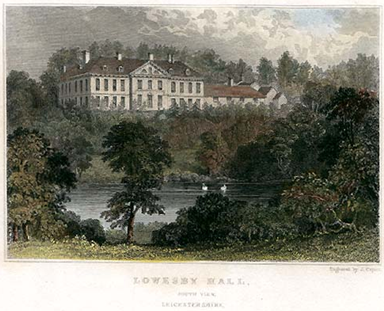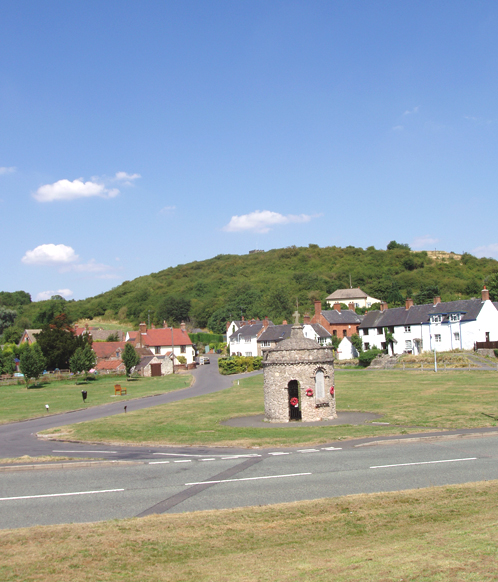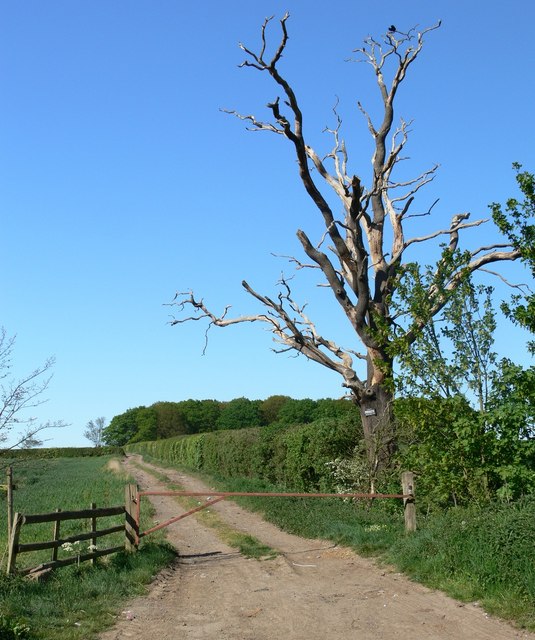|
Lowesby Hall
Lowesby Hall is a large Grade II* Georgian mansion in the parish and former manor of Lowesby, eight miles east of Leicester in Leicestershire. It is a famous fox-hunting seat in the heart of the Quorn country. The poem "Lowesby Hall" by the Victorian English foxhunting MP William Bromley Davenport (1821–1884) was a parody on Alfred Tennyson's 1835 poem Locksley Hall. History Burdet The Domesday Book of 1086 lists the manor of ''Glowesbi'' as one of those held by "Countess Judith", namely the Norman noblewoman Judith of Lens (c.1054/5-c.1090), a niece of King William the Conqueror, being a daughter of his sister Adelaide of Normandy, Countess of Aumale, by her husband Lambert II, Count of Lens. She married Earl Waltheof of Huntingdon and Northumbria (d.1076) the last of the Anglo-Saxon earls and the only English aristocrat to be executed during the reign of William the Conqueror. Before the Norman Conquest of 1066 she held 14 manors, all within the hundred of Wraggoe, Linc ... [...More Info...] [...Related Items...] OR: [Wikipedia] [Google] [Baidu] |
Member Of Parliament
A member of parliament (MP) is the representative in parliament of the people who live in their electoral district. In many countries with bicameral parliaments, this term refers only to members of the lower house since upper house members often have a different title. The terms congressman/congresswoman or deputy are equivalent terms used in other jurisdictions. The term parliamentarian is also sometimes used for members of parliament, but this may also be used to refer to unelected government officials with specific roles in a parliament and other expert advisers on parliamentary procedure such as the Senate Parliamentarian in the United States. The term is also used to the characteristic of performing the duties of a member of a legislature, for example: "The two party leaders often disagreed on issues, but both were excellent parliamentarians and cooperated to get many good things done." Members of parliament typically form parliamentary groups, sometimes called caucuse ... [...More Info...] [...Related Items...] OR: [Wikipedia] [Google] [Baidu] |
Sir Edward Lawrence, 1st Baronet
Sir Edward Lawrence, 1st Baronet (bef. 1674–1749), of St Ives, Huntingdonshire, was an English Whig politician who sat in the English and British House of Commons from 1705 to 1710. Lawrence was born before 1674, the eldest son of Rev. Paul Lawrence, rector of Tangmere, Sussex, and his wife Jane Palmer, daughter of William Palmer of Peppering, Sussex. He succeeded his father in 1674 In 1700, he purchased for £800 the office of gentleman usher of the privy chamber, which had a salary of £200 p.a. He was knighted on 21 January or 6 February 1701 and was appointed a Gentleman of the Privy Chamber in 1702, retaining the post until 1726. At the 1705 English general election, Lawrence was returned as Whig Member of Parliament for Stockbridge and voted for the Court candidate for Speaker on 25 October 1705. He supported the Court with regard to the 'place clause' in the regency bill in February 1706 and acted as teller for the Whigs on occasion. He was appointed a Justice of the Pea ... [...More Info...] [...Related Items...] OR: [Wikipedia] [Google] [Baidu] |
Finborough Hall
Finborough Hall is a Grade II listedHistoric England.St Georges School, Finborough Hall. National Heritage List for England. Retrieved 8 March 2016. stucco-faced Tuscan-style country house in Great Finborough, Suffolk, England. The grounds were originally purchased by Roger Pettiward from Colonel William Wollaston MP. Roger Pettiward rebuilt Finborough Hall in 1795 to a design by Francis Sandys of Bury St Edmunds, who had also worked at Ickworth House. Finborough Hall, due to its association with the Pettiward family, subsequently gave its name to Finborough Road in London, developed as part of the Pettiward Estate in north-west Chelsea, London SW10, still owned by the Pettiward family. This led to the name of Finborough Theatre. The Hall's original c1700 staircase was moved to Rougham Hall in 1878. Finborough School is based in Finborough Hall, and it had previously been the headquarters of the Eastern Electricity Board Eastern Electricity plc was an electricity supply ... [...More Info...] [...Related Items...] OR: [Wikipedia] [Google] [Baidu] |
Shenton Hall
Shenton Hall is a country house within the village of Shenton, in Leicestershire, England. It is recorded in the National Heritage List for England as a designated Grade II* listed building. History Shenton was first mentioned in the Domesday Book of 1086 as 'Scentone', where it is recorded as being owned by the magnate, administrator and landowner Henry de Ferrers. William Wollaston, born in 1681, purchased the estate at Shenton in 1626. Wollaston was born in 1581, and had inherited the fortune of his father Henry Wollaston in 1616, who was an affluent draper. He married Anne Worsley in 1614, and following her death, married Anne Whitgreve in 1616, in Westminster. By 1629, Wollaston had begun the construction of Shenton Hall in the Jacobean style for him, his second wife Anne, and their two sons. Wollaston incorporated the datestone ''WW 1629'' into the gatehouse. In the same year, he was appointed High Sheriff of Leicestershire. During the English Civil War, Wollast ... [...More Info...] [...Related Items...] OR: [Wikipedia] [Google] [Baidu] |
Lord Mayor Of London
The Lord Mayor of London is the mayor of the City of London and the leader of the City of London Corporation. Within the City, the Lord Mayor is accorded precedence over all individuals except the sovereign and retains various traditional powers, rights, and privileges, including the title and style ''The Right Honourable Lord Mayor of London''. One of the world's oldest continuously elected civic offices, it is entirely separate from the directly elected mayor of London, a political office controlling a budget which covers the much larger area of Greater London. The Corporation of London changed its name to the City of London Corporation in 2006, and accordingly the title Lord Mayor of the City of London was introduced, so as to avoid confusion with the mayor of London. However, the legal and commonly used title remains ''Lord Mayor of London''. The Lord Mayor is elected at ''Common Hall'' each year on Michaelmas, and takes office on the Friday before the second Saturday i ... [...More Info...] [...Related Items...] OR: [Wikipedia] [Google] [Baidu] |
John Wollaston (Lord Mayor)
Sir John Wollaston (died 26 April 1658) was an English merchant who was Lord Mayor of London in 1643. Wollaston was a city of London merchant and a member of the Worshipful Company of Goldsmiths. He was deputy-governor of the Irish Society from 1633 to 1634 and from 1636 to 1637. He was Sheriff of London from 1638 to 1639. On 5 February 1639 he was elected an alderman of the City of London for Farringdon Without ward and was Prime Warden of the Goldsmiths Company from 1639 to 1640. He became a colonel of the London Trained Bands in 1641 and was knighted on 3 December 1641. In 1642 he became alderman for Dowgate ward and colonel of the Yellow Regiment, London Trained Bands. He also became president of the Bethlem and Bridewell. In 1643, he was elected Lord Mayor of London. He became alderman for Aldersgate in 1644 until 1647. In 1649 he became president of Christ's Hospital. He was elected alderman for Bridge Without Bridge Without was a historical ward of the City of London situ ... [...More Info...] [...Related Items...] OR: [Wikipedia] [Google] [Baidu] |
Breedon On The Hill
Breedon on the Hill is a village and civil parish about north of Ashby-de-la-Zouch in North West Leicestershire, England. The parish adjoins the Derbyshire county boundary and the village is only about south of the Derbyshire town of Melbourne. The 2001 Census recorded a parish population (including Isley and Wilson) of 958 people in 404 households. The parish includes the hamlets of Tonge east of the village and Wilson north of the village on the county boundary. The population at the 2011 census (including Isley cum Langley and Langley Priory) was 1,029 in 450 households. Geography Breedon is notable for its Carboniferous limestone hill that rises above sea level in a generally low-lying landscape and affords distant views across several counties. A large portion of the hill has been cut away by an active quarry now operated by the Breedon Group. On top of the hill is The Bulwarks Iron Age hill fort, within which is Breedon's historic Church of England parish church. ... [...More Info...] [...Related Items...] OR: [Wikipedia] [Google] [Baidu] |
Lubbesthorpe
Lubbesthorpe is a hamlet and parish in the district of Blaby within Enderby on the outskirts of Leicester, on the west side of the M1 motorway and the River Soar.GENUKI Lubbesthorpe Name The name is said to mean "Lubba's e", i.e. a small settlement belonging to Lubba, an name.W. G. Hoskins (1935) Leicestershire Archaeological Society vol XVIII part 2 page 143 "The Anglian and Scandinavian Settlement of Leicestershire" It has been spelled as Lubbesthorpe.History It was listed in the '' |
Excommunicated
Excommunication is an institutional act of religious censure used to end or at least regulate the communion of a member of a congregation with other members of the religious institution who are in normal communion with each other. The purpose of the institutional act is to deprive, suspend, or limit membership in a religious community or to restrict certain rights within it, in particular, those of being in communion with other members of the congregation, and of receiving the sacraments. It is practiced by all of the ancient churches (such as the Catholic Church, Oriental Orthodox churches and the Eastern Orthodox churches) as well as by other Christian denominations, but it is also used more generally to refer to similar types of institutional religious exclusionary practices and shunning among other religious groups. The Amish have also been known to excommunicate members that were either seen or known for breaking rules, or questioning the church, a practice known as shunni ... [...More Info...] [...Related Items...] OR: [Wikipedia] [Google] [Baidu] |
Tithes
A tithe (; from Old English: ''teogoþa'' "tenth") is a one-tenth part of something, paid as a contribution to a religious organization or compulsory tax to government. Today, tithes are normally voluntary and paid in cash or cheques or more recently via online giving, whereas historically tithes were required and paid in kind, such as agricultural produce. After the separation of church and state, church tax linked to the tax system are instead used in many countries to support their national church. Donations to the church beyond what is owed in the tithe, or by those attending a congregation who are not members or adherents, are known as offerings, and often are designated for specific purposes such as a building program, debt retirement, or mission work. Many Christian denominations hold Jesus taught that tithing must be done in conjunction with a deep concern for "justice, mercy and faithfulness" (cf. Matthew 23:23). Tithing was taught at early Christian church councils, ... [...More Info...] [...Related Items...] OR: [Wikipedia] [Google] [Baidu] |





